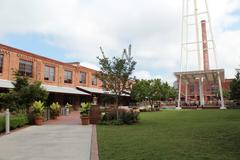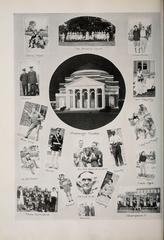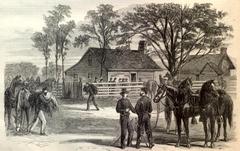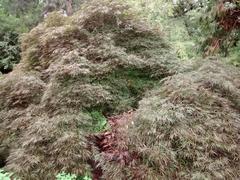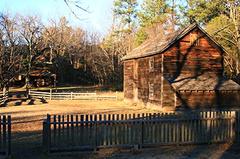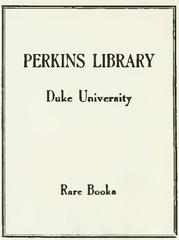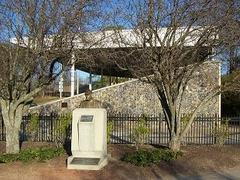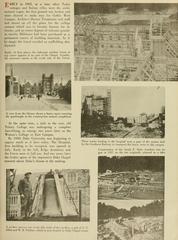
Duke University Visiting Guide – Durham, North Carolina, USA
Date: 03/07/2025
Introduction: What Visitors Can Expect at Duke University
Nestled in Durham, North Carolina, Duke University is celebrated for its academic excellence, stunning architecture, and rich cultural heritage. Founded in 1838 and evolving into its current form in 1924, Duke’s history is deeply intertwined with the city and the philanthropic Duke family, whose legacy is visible throughout the campus (Wikipedia: History of Duke University). Visitors can expect to encounter grand Collegiate Gothic and Georgian buildings, world-class gardens, vibrant campus life, and a deep connection to Durham’s broader historical narrative (Duke Facilities: History of Duke’s Architecture).
This guide provides a comprehensive overview of visiting Duke, including historical background, must-see landmarks, tour options, practical tips, accessibility, nearby attractions, and insider recommendations to ensure a memorable experience.
Table of Contents
- Early History and Key Milestones
- Duke and Durham’s Black Community
- Campus Architecture and Notable Sites
- Visiting Information: Hours, Tickets, and Tours
- Exploring Durham: Historical Sites Near Duke
- Visitor Tips: Parking, Accessibility, and Amenities
- Frequently Asked Questions (FAQ)
- Planning Your Visit: Apps, Events, and More
- Sources and Further Reading
Early History and Milestones
Duke University’s roots go back to Brown’s Schoolhouse (1838) in Randolph County, later evolving through several names—including Union Institute Academy (1841), Normal College (1851), and Trinity College (1859)—before relocating to Durham in 1892, thanks to the support of Washington Duke and Julian S. Carr (Wikipedia: History of Duke University; North Carolina History; Today@Duke: Trinity College Moves to Durham).
The pivotal transformation came in 1924 when James B. Duke created The Duke Endowment, ensuring the university’s growth and renaming it in honor of the Duke family. This marked the start of an ambitious expansion of facilities, programs, and global reputation (Wikipedia: History of Duke University).
Duke and Durham’s Black Community
Durham’s Hayti District developed as a center of Black economic and cultural achievement in the late 19th and early 20th centuries, sometimes called “Black Wall Street.” The Duke family supported community institutions like St. Joseph’s AME Church and contributed to Black healthcare initiatives (Forward Pathway; Today@Duke: Durham’s Black History).
Duke’s relationship with Durham’s Black community has included both collaboration and challenges. In recent decades, the university has worked to address historical inequities through centers like the Mary Lou Williams Center for Black Culture and ongoing community partnerships (Forward Pathway).
Campus Architecture and Notable Sites
East Campus: Georgian Symmetry
Rebuilt between 1925 and 1927, East Campus is known for its Georgian-style architecture, characterized by red brick facades and classical symmetry (Duke Facilities: Georgian Style). This area houses all first-year students and is adjacent to the Trinity Historic District, which features Queen Anne and Craftsman homes (Wikipedia: Trinity Historic District).
West Campus: Collegiate Gothic Grandeur
Designed by Horace Trumbauer and Julian F. Abele, West Campus showcases Collegiate Gothic architecture with pointed arches, towers, and intricate stonework. The campus’s signature “Duke Stone” provides unity and warmth (Duke Facilities: Collegiate Gothic Style; Duke Facilities: Duke Stone).
Duke University Chapel
The heart of West Campus is the 210-foot-tall Duke Chapel, a masterpiece of Gothic architecture with soaring stained-glass windows and a 50-bell carillon (Duke Chapel: History & Architecture). The chapel hosts concerts, lectures, and worship services and is open to visitors year-round.
Modern and Sustainable Buildings
Duke’s commitment to sustainability is evident in recent projects like the Brodhead Center and Grainger Hall, which incorporate eco-friendly materials and design. Over 51 buildings are LEED certified or registered, representing more than 30% of the university’s footprint (Duke Sustainability: Buildings).
Visiting Duke University: Hours, Tickets, and Tours
General Hours
- Outdoor Areas: Open daily from dawn to dusk.
- Duke University Chapel: Monday–Saturday 8:00 AM–5:00 PM, Sunday 10:00 AM–5:00 PM (Duke Chapel Visit Info).
- Sarah P. Duke Gardens: 8:00 AM–7:00 PM (hours vary seasonally).
- Nasher Museum of Art: Tuesday–Sunday, hours vary; check official website.
Tickets and Admission
- Campus Grounds & Gardens: Free entry.
- Museums & Special Exhibits: May require tickets or donations.
- Guided Tours: Free, but advance reservations required (Duke Admissions: Campus Visits).
Guided and Self-Guided Tours
- Student-Led Walking Tours: 60–90 minutes, provide insights into history, architecture, and student life.
- Self-Guided Tours: Available via printed maps and the “Duke Explore” app (Duke Tour Guide; Duke Explore app).
- Virtual Tours: Accessible through Duke’s admissions website.
Special Attractions
- Duke Lemur Center: Guided tours require advance tickets (Duke Lemur Center).
- Athletic Events: Tickets for basketball and other sports can be purchased online (Duke Athletics).
Exploring Durham: Historical Sites Near Duke
- Hayti Heritage Center: Celebrating Durham’s Black history and culture.
- St. Joseph’s AME Church: Founded in 1891, a cornerstone of the Hayti District.
- Trinity Historic District: Offers a glimpse of Durham’s architectural and social history (Wikipedia: Trinity Historic District).
- Historic Brightleaf Square: Former tobacco warehouses now housing shops and restaurants.
- Stagville State Historic Site: One of North Carolina’s largest plantations, offering tours on regional history (AEESP 2025).
Visitor Tips: Parking, Accessibility, and Amenities
- Parking: Bryan Center Parking Garage is central for West Campus; Sarah P. Duke Gardens has its own lot. Rates average $2/hour. Arrive early during peak times.
- Accessibility: Major buildings and tours are wheelchair accessible. Contact the Office for Accessibility Resources for special needs.
- Public Transit: GoDurham and GoTriangle bus lines stop near campus.
- Restrooms: Available in major buildings; not inside Duke Chapel.
- Dining: On-campus dining at West Union, Brodhead Center, and nearby Ninth Street.
- Wi-Fi: Free guest Wi-Fi in most campus buildings.
- Tobacco-Free Policy: No smoking, vaping, or tobacco products permitted anywhere on campus.
Frequently Asked Questions (FAQ)
Q: What are Duke University’s visiting hours?
A: Most outdoor areas are open dawn to dusk. Key sites like Duke Chapel and Sarah P. Duke Gardens have set hours; check the official website for details.
Q: Is there an admission fee?
A: Campus grounds and gardens are free. Some museums and special attractions require tickets.
Q: How do I book a campus tour?
A: Reserve online via the Duke Admissions website.
Q: Is the campus accessible for people with disabilities?
A: Yes, most buildings and tours are accessible; contact visitor services for specific accommodations.
Q: Where can I park?
A: Visitor parking is available at the Bryan Center Garage and other designated lots.
Q: Can I take photos on campus?
A: Yes, photography is allowed except where posted during events.
Planning Your Visit: Apps, Events, and More
- Events Calendar: Check the Duke University Events Calendar for lectures, concerts, and exhibits.
- Mobile Apps: Download the “Duke Explore” app for self-guided tours. For curated experiences, try the Audiala app.
- Best Seasons: Spring and fall for gardens in bloom and mild weather.
- Hotels: Washington Duke Inn, JB Duke Hotel, and several major chains within 1–3 miles of campus offer special Duke rates.
Summary and Visitor Recommendations
Duke University offers a unique destination for history, architecture, and campus culture enthusiasts. From the Georgian elegance of East Campus to the Collegiate Gothic splendor of West Campus and the iconic Duke Chapel, the campus is rich with stories and photo opportunities. Its connection to Durham’s historic Black community and proximity to significant local sites makes a visit to Duke both educational and enriching.
Plan ahead, reserve tours, use recommended apps, and check event calendars to make the most of your visit. With accessible facilities, a wealth of free attractions, and plenty to explore both on campus and in Durham, Duke University is a must-see for anyone visiting North Carolina.
Sources and Further Reading
- Wikipedia: History of Duke University
- North Carolina History: Duke University
- Today@Duke: Trinity College Moves to Durham
- Forward Pathway: Duke University and the Black Community of Durham
- Duke Facilities: History of Duke’s Architecture
- Duke Facilities: Collegiate Gothic Style
- Duke Facilities: Duke Stone
- Duke Chapel: History & Architecture
- Duke Admissions: Campus Visits
- Duke Chapel Visit Info
- He Travels Solo: Travel Guide for Visiting Duke University
- Discover Durham: Best Hotspots Near Duke University
- Kim and Carrie: Visiting Duke University
- The Tourist Checklist: Duke Campus Visitor Guide
- AEESP 2025: Fun Things to Do in Durham and the Greater NC Research Triangle
- Duke Lemur Center
- Duke Athletics
- Duke Gardens
- Nasher Museum
- Duke University Events Calendar
- Duke Explore app





